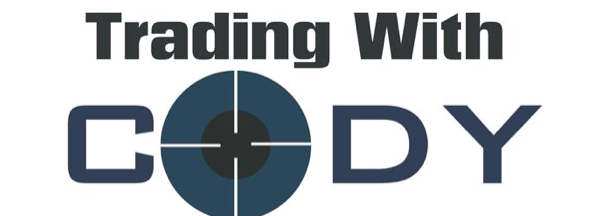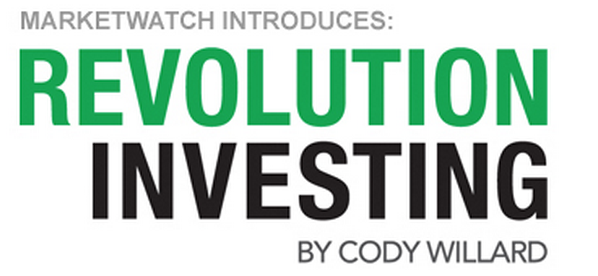(Due to yesterday’s tragic events, today’s commentary will not be password protected. Tomorrow it will only be available to Platinum subscribers.)
Where do I begin? To say that yesterday’s market would be unexciting and lethargic was an incorrect understatement. Rather the market, nay, the country was subjected to an exogenous event. When that occurs, all bets are off and you have to turn on risk management mode. Understand that risk management mode is not sell or panic mode. Let me explain further.
However, before I forget, on behalf of me, my family and everyone here at Wall Street All-Stars, our hearts and prayers go out to all the victims of the Patriots’ Day Boston Massacre. Having been at the World Trade Center on 9/11, I know how tragic and traumatic today’s events can be. It certainly resonated throughout the City of New York and its suburbs on Monday. Thanks to everyone who inquired about my son who is in law school in Boston. He is safe and sound.
Yesterday, while the markets were impacted early by falling commodity prices and weak economic data, clearly the events in Boston ruled the day and will be on the forefront on Tuesday. As for the weak economic data, I have a few thoughts. Less than expected GDP growth in China resulted in a sharp sell-off in commodities. We all know that the Chinese economy is still centrally controlled by Beijing and economic data is manipulated by the government as well. The Chinese received the exact reaction that they were hoping for – a sell-off in commodities. Now the Chinese can step up and buy those much needed commodities at lower prices and begin to expand growth once again. Once again, the rest of the world will help to finance Chinese economic growth. As for the disappointing Empire State Manufacturing report, I say what manufacturing in New York? It is a meaningless and volatile report. Taken together, all that we had was a reason to pull back and consolidate recent gains. Then however, the events in Boston led to full-fledged panic.
I have had significant experience in dealing with exogenous events such as today. Exogenous events have to be divided into two types. The first is an event which will last for an extended period of time. Examples of such are: the 1987 market crash; the Iraqi invasion of Kuwait; the 9/11 attacks; the Congressional vote against TARP (the first time around); the Lehman Brothers bankruptcy; and, the resignation of President Richard Nixon. All of those events were long lasting and had far reaching repercussions. In reaction to those events you had to develop a defensive posture in order to ride out the event to their full conclusion, which could take weeks or months. Eventually the market rose to new highs. The second sort of exogenous event tends to be unexpected and has an immediate but short lived impact to the financial markets. Such examples are: President Eisenhower’s heart attack; President Kennedy’s assassination; the Russian Coup; the Atlanta Olympic bombings; the London Underground bombings; and the Dubai Default. Typically, the markets decline a single day on the day or the day after those events. Many times, the markets open on the lows of the day and trade higher. It all depends if the event takes place during the market’s trading hours, before the markets open or the day before. These events are made to be bought. Yesterday’s Patriots’ Day terrorist attack was such an event. For more aggressive accounts, I bought the ProShares Ultra S&P 500 Index ETF (SSO) just as the market was closing. Otherwise, I did not panic and sold not a single share of stock.,
Here are some quantitative examples to support how one day exogenous events were meant to be bought and not sold:
- President Eisenhower’s heart attack – Saturday September 24, 1955. On Monday September 26, 1955, the S&P 500 (SPX) declined 6.62% (note: I do not have high and lows for the index on that date). The following day the index rose 2.28%
- Assassination of President Kennedy – Friday. November 22, 1963, 1:30PM central time. The markets were open that day and the SPX fell 2.81%. The markets reopened on Tuesday, November 26 whereby the SPX rose 3.98%
- Russian Coup – It began on Monday, August 19, 1991. I remember the event vividly. I was working as head of risk management at County Nat West Securities in London. I received a phone call from my boss and mentor, Gregg Van Kipnis, at about 5AM, after we were out the evening before for a nice dinner and plenty of fine wine. He said to come into work as soon as possible as there was a coup d’état taking place in Russia. I thought he was pulling a joke on me but he assured me otherwise. I quickly got showered and dressed and took a London cab to work. On the company’s trading floor were assembled many of the senior executives of Country NatWest and its parent, National Westminster Bank – the vice chairman of the bank, the chairman of County NatWest, the heads of UK market making, Gregg and me. We discussed what to do. The markets were down big in the Far East and futures indicated large declines in Europe and the US. In fact, if I recall, the SPX futures were already indicated to be down limit. Gregg and I, in my opinion, were the only qualified risk managers in the crowd. The market makers said that they would prefer not to show capital to clients. I told them they were nuts and that would be a big mistake. They were in the business of showing capital to clients and if they refused to do so, they would come into work the next day with far less clients. I was sure that arch rival Barclay’s was taking the high road and we would lose clients to them. In fact, I said that the markets were panicking and I would be an aggressive buyer at the open. We made markets for clients, albeit of less than usual size. The SPX closed at 385.58 on the Friday before, opened down hard, bottomed out early at 374.09 and closed at 376.47, 0.64% off the lows. The next day the SPX rose 0.79% and followed up with a surge of 2.94% to close at 390.59 on Wednesday.
- Atlanta Olympic Bombing – Saturday, July 27, 1996. When trading resumed on Monday, the SPX closed down 0.78% on the low of the session only to rise 0.69% the following day.
- London Underground Bombings – Thursday, July 7, 2005. The bombing took place during the London morning rush hour, before the US market open. The SPX closed at 1,194. 94 the day before and then opened pretty much near the lows of the session of 1,183.55 and closed higher for the day at 1,197.87. Only July 8, the SPX rose another 1.17%
- Dubai Default – Thursday, November 26, 2009. This “bombshell” landed on Thanksgiving Day when the US markets were closed. The SPX declined 1.72% the next day, Friday, but 0.72% off the day’s low. The next trading day, Monday, the SPX rose 0.38% and followed that up with a 1.21% rise on Tuesday, December 1.
So, if you are inclined to wake up today and panic. Think twice. The smart money will be the buyer on the other side of your trade.
Also, don’t forget that we have some big earnings on the calendar today, including: Goldman Sachs (GS), Intel (INTC) and Yahoo (YHOO)
________________________________________________________________________________________
Disclosure: At the time of this commentary Scott Rothbort, his family and/or clients of LakeView AssetManagement, LLC was long SSO stock— although positions can change at any time.
Scott Rothbort is also the publisher of the LakeView Restaurant & Food Chain Report, a newsletter focusing in on food, restaurant and agricultural stocks. You can subscribe at www.restaurantstox.com
Chat with Scott all day in “The Finance Professor’s Classroom” with your Platinum subscription to Wall Street All-Stars.
You can email Scott at [email protected]
Related posts:
 +0.00%
+0.00% +0.01%
+0.01%





Pingback: The markets are wound tight
Pingback: My Gut Feeling for Today, April 24, 2024